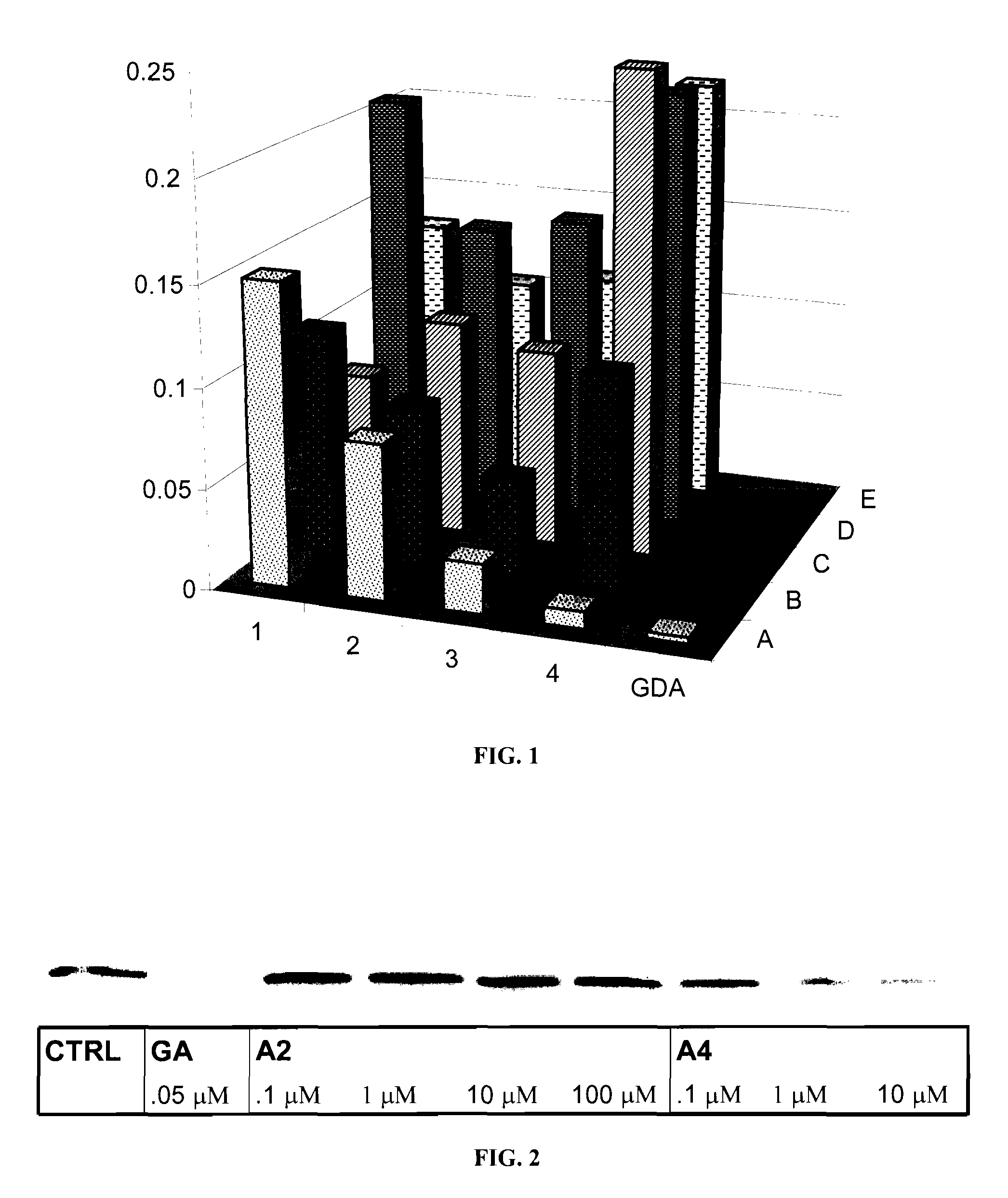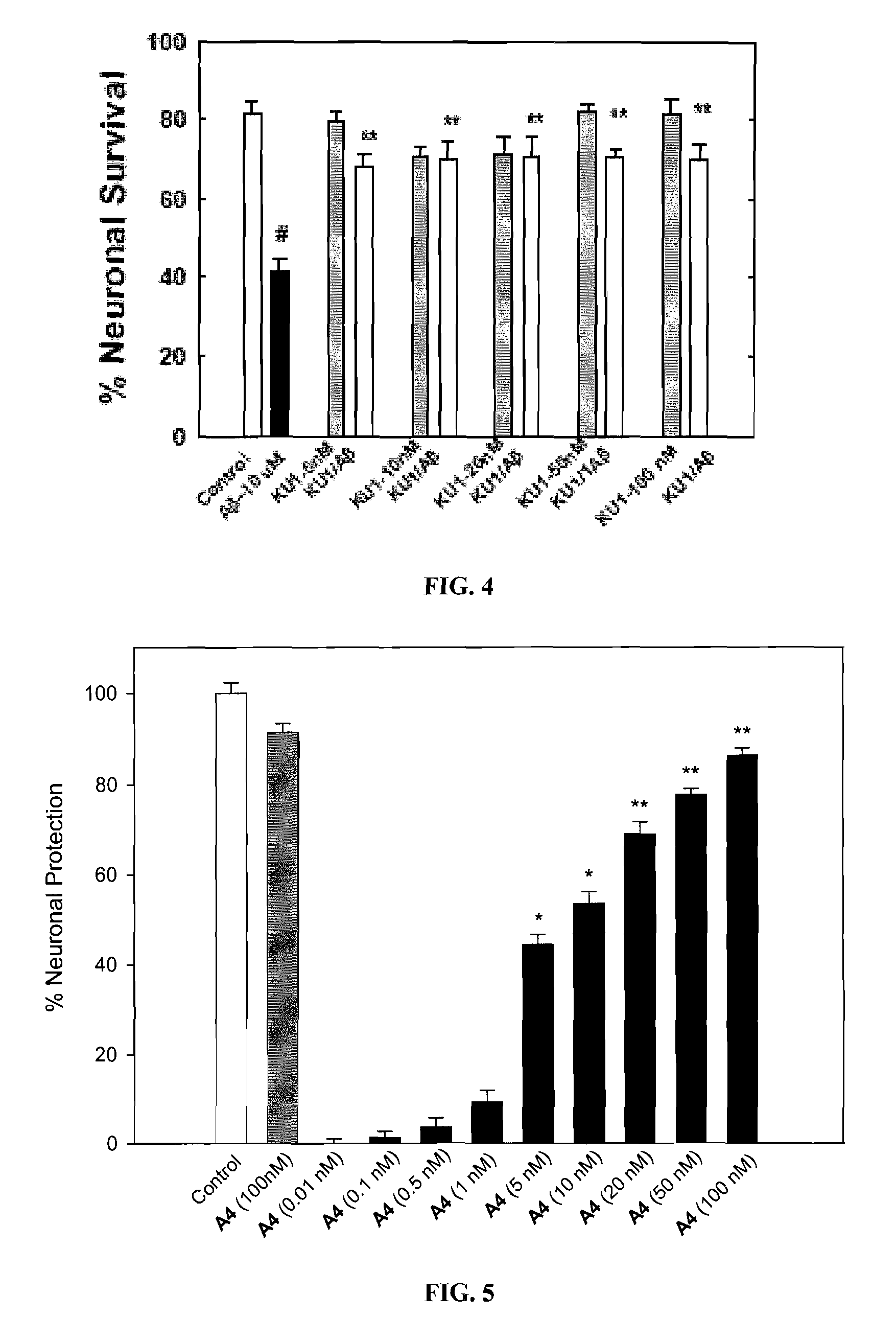Novobiocin analogues having modified sugar moieties
a technology of sugar moieties and analogues, which is applied in the field of analogues of novobiocin with modified sugar moieties, can solve the problems of less than optimal overall yield
- Summary
- Abstract
- Description
- Claims
- Application Information
AI Technical Summary
Benefits of technology
Problems solved by technology
Method used
Image
Examples
example 1
Synthesis of Novobiocin Analogues
[0204]In an effort to increase the affinity of novobiocin for the C-terminal ATP binding site, a library of novobiocin analogue compounds that contained both modified coumarin and sugar derivatives was prepared. The compounds were prepared as set forth in the scheme below along with a procedure recently developed for the synthesis of noviose. See Yu et al., Synthesis of (−)-Noviose from 2,3-O-Isopropylidene-D-erythronolactol, J. Org. Chem. 69, 7375-7378 (2004), which is incorporated by reference.
[0205]
[0206]The novobiocin analogues prepared according to the scheme included modification of the coumarin ring by shortening of the amide side chain and removal of the 4-hydroxy substituent (A) (see Madhavan et al., Novel Coumarin Derivatives of Heterocyclic Compounds as Lipid Lowering Agents, Bioorg. Med. Chem. Lett. 13, 2547 (2003), which is incorporated by reference), removal of both the 4-hydroxy and amide linker (B), steric replacements of both the 4-h...
example 2
Degradation of Phospho-AKT
[0243]Inhibition of Hsp90 results in the degradation of Hsp90-dependent clients via ubiquitination of the unfolded client followed by proteasome-mediated hydrolysis. To test whether Hsp90 client proteins were degraded in the presence of these novobiocin analogues, each member of the library from Example 1 was incubated with SKBr3 breast cancer cells at a concentration of 100 μM. Western blot analysis of the protein lysates demonstrated that several of the compounds were capable of causing the degradation of the Hsp90-dependent oncogenic client protein, phospho-AKT as represented in FIG. 1. Phospho-AKT was chosen as a client protein for this assay because of previous reports indicating that phospho-AKT is a more sensitive indicator of Hsp90 inhibition than AKT. Geldanamycin (GDA, 0.5 μM) was used as a positive control for Hsp90 inhibition.
[0244]As can be seen from FIG. 1, A4 / KU-1 (diol) and A3 / KU-2 (3′-carbamate) were the most potent novobiocin analogues ide...
example 3
Degradation of HER-2
[0245]The IC50 for Hsp90 inhibitors is sometimes determined as the concentration of inhibitor required to produce 50% degradation of Her-2, another therapeutically important Hsp90 client protein involved in breast cancer. When KU-1 / A4 was incubated with Skbr3 breast cancer cells at concentrations of 100 nM, 1 μM, and 10 μM, a rapid decrease in Her-2 was observed between 100 nM and 1 μM, as shown in the Western blot of FIG. 2. These data are normalized against actin, a non-Hsp90 client protein, used as a control for non-specific degradation. These data suggest the IC50 of KU-1 / A4 is in the low micromolar range, whereas novobiocin in the same assay produces an IC50 of 700 μM.
PUM
| Property | Measurement | Unit |
|---|---|---|
| pH | aaaaa | aaaaa |
| temperature | aaaaa | aaaaa |
| humidity | aaaaa | aaaaa |
Abstract
Description
Claims
Application Information
 Login to View More
Login to View More - R&D
- Intellectual Property
- Life Sciences
- Materials
- Tech Scout
- Unparalleled Data Quality
- Higher Quality Content
- 60% Fewer Hallucinations
Browse by: Latest US Patents, China's latest patents, Technical Efficacy Thesaurus, Application Domain, Technology Topic, Popular Technical Reports.
© 2025 PatSnap. All rights reserved.Legal|Privacy policy|Modern Slavery Act Transparency Statement|Sitemap|About US| Contact US: help@patsnap.com



